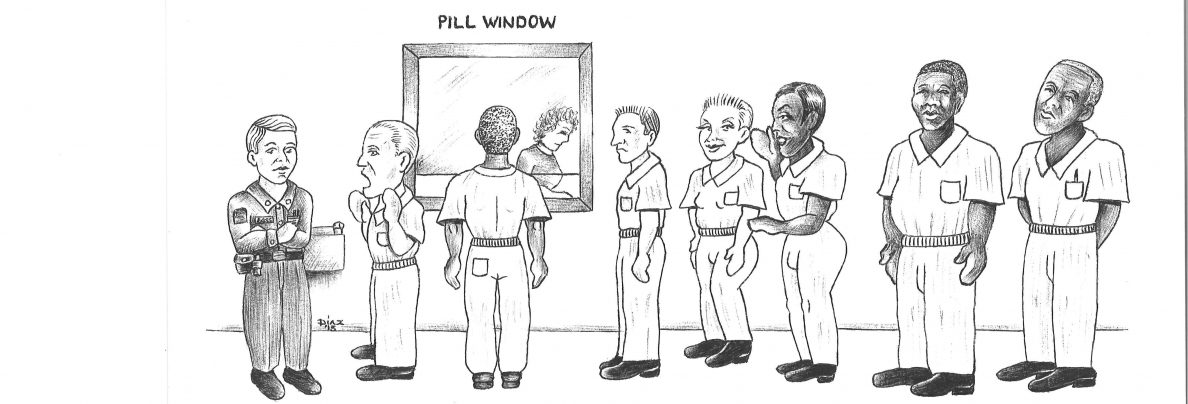By Priyanka Anand
From PHN Issue 31, Winter 2017
Most people have heard of high blood pressure, also known as hypertension. Maybe the doctor has told you that you have high blood pressure. About 30 percent of adults in the United States have high blood pressure.
What is high blood pressure?
Blood pressure is the pressure of your blood pushing against your blood vessels. When you have your blood pressure taken, the doctor or nurse will give you two numbers: your systolic blood pressure and your diastolic blood pressure. Your systolic blood pressure represents your highest blood pressure, when your heart is contracting, and the diastolic represents your lowest blood pressure, when your heart is relaxed. For example, if your blood pressure is 120/80 (“one-twenty over eighty”), you have a systolic blood pressure of 120, and a diastolic blood pressure of 80.
Normal blood pressure is a systolic blood pressure less than 120 and a diastolic blood pressure less than 80. A blood pressure of more than 140/90 is a high blood pressure.
To be diagnosed with high blood pressure, you need to have two or three blood pressure measurements that are high, measured at separate doctor’s visits. This is because your blood pressure goes up if you have just been exercising or you are nervous at the doctor’s office.
Why is high blood pressure bad for you?
Our blood travels through our body in blood vessels. As it travels through the body, blood carries nutrients and oxygen to all the different parts of our body. We can think of our blood vessels as hoses, and our blood like the water in a hose. Our heart is a pump that sends the blood around our body, providing water pressure. We need some pressure in the hose to make sure that the blood goes to all the places it’s supposed to, but where there is too much pressure, it can damage the hose. High blood pressure puts strain on our blood vessels. This can result in damage to our kidneys and strokes or bleeds in our brain. It also puts strain on the pump (our heart). This is why high blood pressure puts us at risk for heart disease, heart attacks, and heart failure.
Most people who have high blood pressure feel perfectly healthy. But having untreated high blood pressure puts us at a higher risk for heart attacks and strokes as well as kidney disease over time. That is why high blood pressure is often called a “silent killer.”
What causes high blood pressure?
We don’t fully understand why people develop high blood pressure, but we do know that there are many risk factors. These include aging, obesity, a high salt diet, high alcohol consumption, physical inactivity, diabetes, and high cholesterol. Also, if a family member has high blood pressure, you are at higher risk.
How can I control my high blood pressure?
If you have high blood pressure, set a blood pressure goal with the doctor, usually less then 140/90. Studies show that any decrease in your blood pressure reduces the risk of complications, so every small reduction helps.
The first step in controlling your high blood pressure is diet and exercise. Aerobic exercise, like walking or running, three to four times a week has been shown to lower blood pressure.
Diet tips for controlling high blood pressure include:
- Trying not to eat much salty food, like chips and salted nuts
- Only adding salt to your food if you can’t eat it otherwise
- Weight loss if your doctor has said you are obese
- Avoiding fatty foods, like chicken skin and cheeseburgers
- Drinking 1% or skim milk if available, instead of regular milk
- Eating fruits and vegetables (rinse salt off canned vegetables)
The best way to start a change in your lifestyle is to pick one change that will be easy to make starting today, for example, exercising. You don’t have to change everything at once. If that change goes well for several weeks, think of adding another change.
The main kinds of medications that lower blood pressure are:
- Diuretics (water pills): these include drugs like hydrochlorothiazide. Diuretics make you pee more than usual to get rid of water and salt.
- ACE inhibitors and angiotensin receptor blockers (ARBs): these include drugs like lisinopril (Zestril), valsartan (Diovan) and losartan (Cozaar). They can help prevent kidney disease and are often given to people with diabetes.
- Calcium channel blockers: these include drugs like amlodipine (Norvasc). They relax your blood vessels to lower your blood pressure.
- Beta blockers: these include drugs like metoprolol (Toprol, Lopressor). They reduce the amount of work the heart has to do, and are often given to people who have had heart attacks.
One of these medications may be prescribed if exercise and diet alone aren’t enough to get your blood pressure under control. If one medication isn’t enough, the doctor may add a second or third medication.
If you have other conditions that might put a strain on your heart or blood vessels, such as diabetes or high cholesterol, it’s important to tackle those too. With exercise, diet, and sometimes medications, you can bring your high blood pressure under control!

